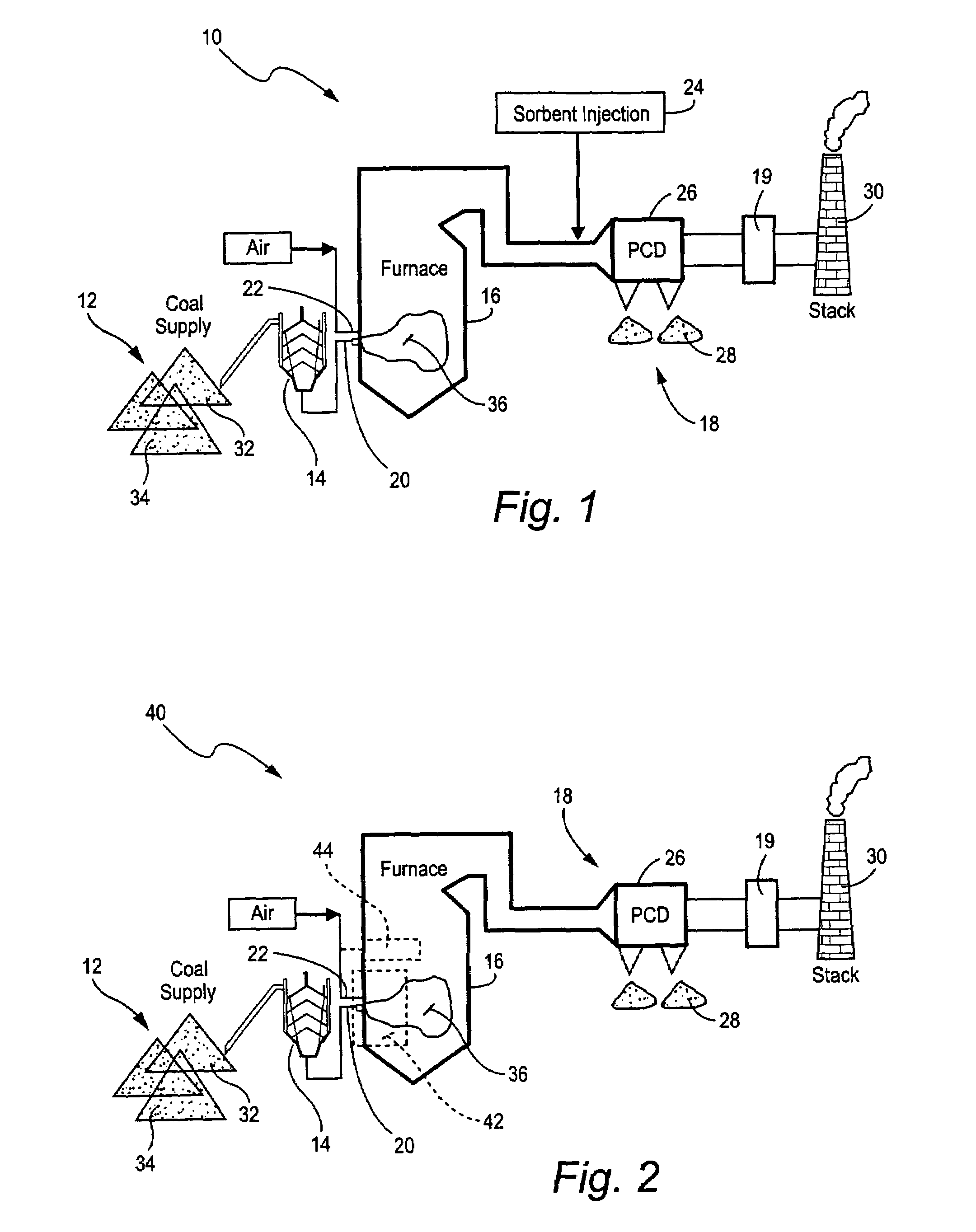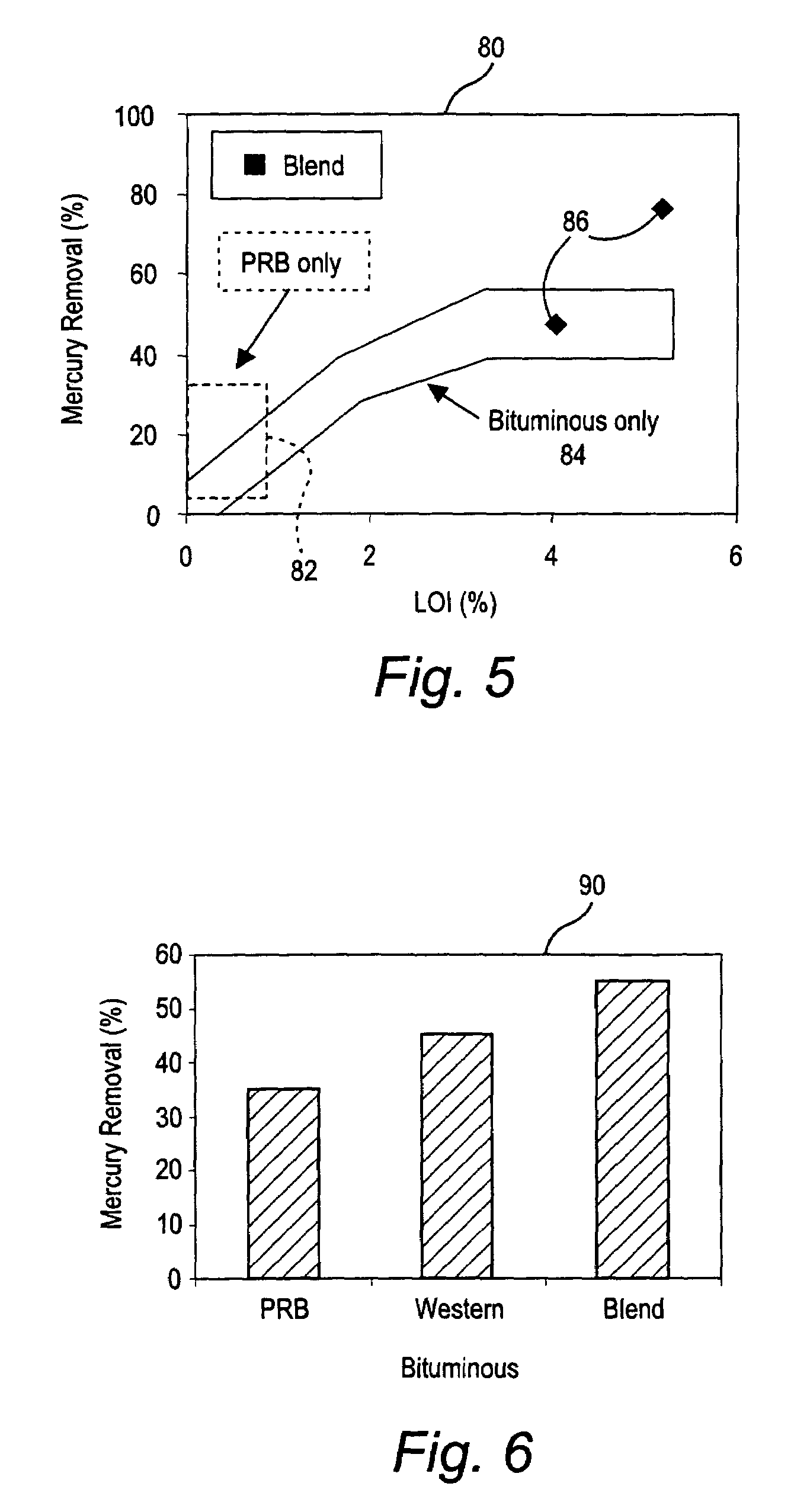Mercury reduction system and method in combustion flue gas using coal blending
a flue gas and mercury reduction technology, applied in the field of coal combustion, can solve the problems of reducing the amount of mercury in the flue gas, affecting the health of people, and difficult to remove by conventional combustion emission control devices, etc., and achieve the effect of reducing mercury in gas emissions
- Summary
- Abstract
- Description
- Claims
- Application Information
AI Technical Summary
Benefits of technology
Problems solved by technology
Method used
Image
Examples
Embodiment Construction
[0017]FIG. 1 shows a coal-fired power plant 10 comprising a supply of various types of coal 12, a coal mixing bin 14, a coal-fired boiler 16, and a combustion waste treatment system 18. The boiler includes a coal fuel injection system 20 and air injectors 22. The combustion waste treatment system includes a sorbent injection system 24, a particulate control device (PCD) 26 with an ash discharge 28, wet scrubber 19, and a stack 30 for flue gas discharge. The PCD captures fly ash and sorbent in the flue gas. The wet scrubber removes SO2 from flue gas.
[0018]The coal supply 12 and mixing bin includes low rank coals 32 and another type of coal 34 having a relatively high chlorine (Cl) content, such as a bituminous coal having an average chlorine content of between 100 to 2000 parts per million (ppm). In contrast Low rank coal 32 typically has a low chlorine content, such as below 100 ppm. Low rank coals are blended with a high chlorine content coal, e.g., a chlorine content above 100 ppm...
PUM
| Property | Measurement | Unit |
|---|---|---|
| temperature | aaaaa | aaaaa |
| height | aaaaa | aaaaa |
| diameter | aaaaa | aaaaa |
Abstract
Description
Claims
Application Information
 Login to View More
Login to View More - R&D
- Intellectual Property
- Life Sciences
- Materials
- Tech Scout
- Unparalleled Data Quality
- Higher Quality Content
- 60% Fewer Hallucinations
Browse by: Latest US Patents, China's latest patents, Technical Efficacy Thesaurus, Application Domain, Technology Topic, Popular Technical Reports.
© 2025 PatSnap. All rights reserved.Legal|Privacy policy|Modern Slavery Act Transparency Statement|Sitemap|About US| Contact US: help@patsnap.com



